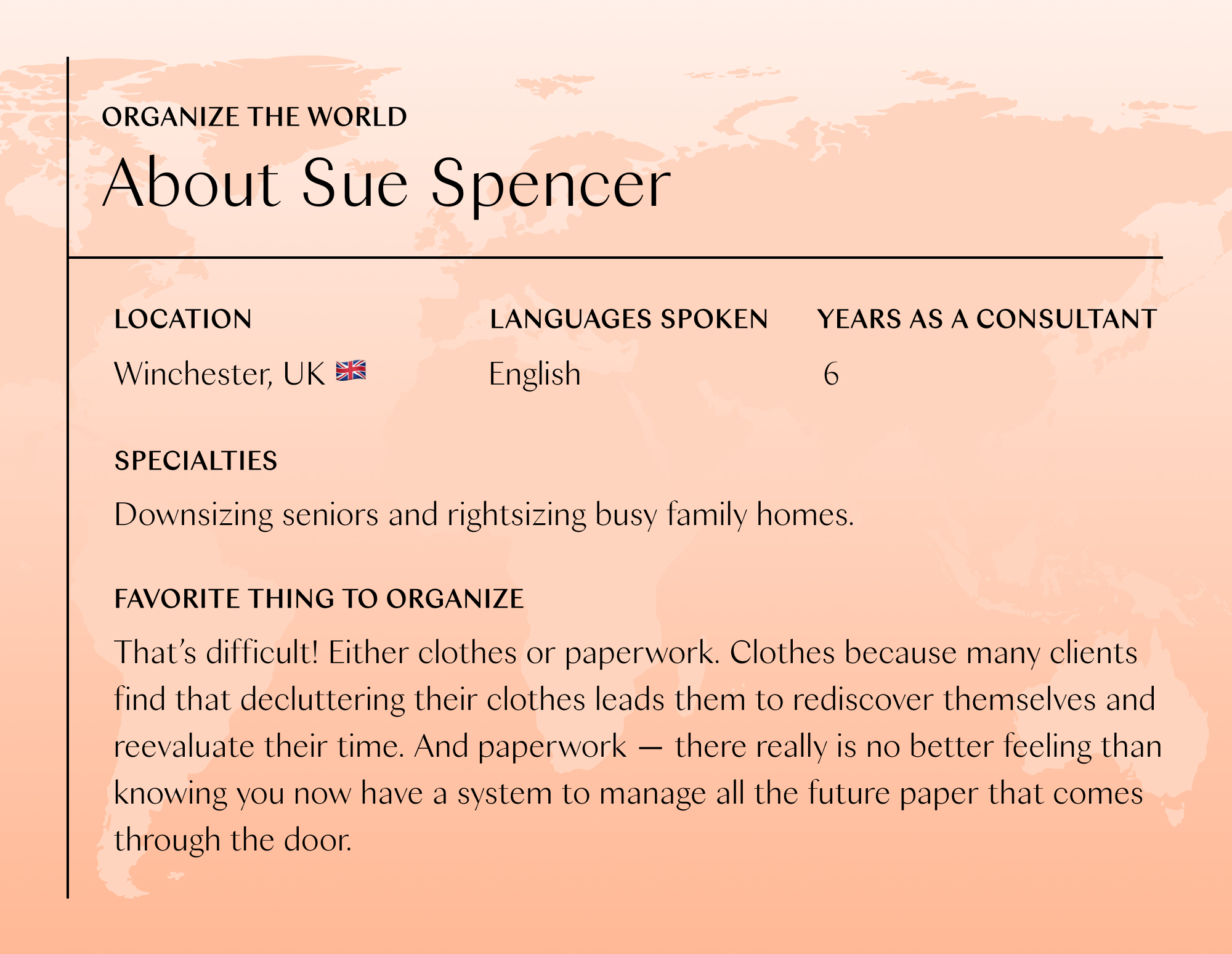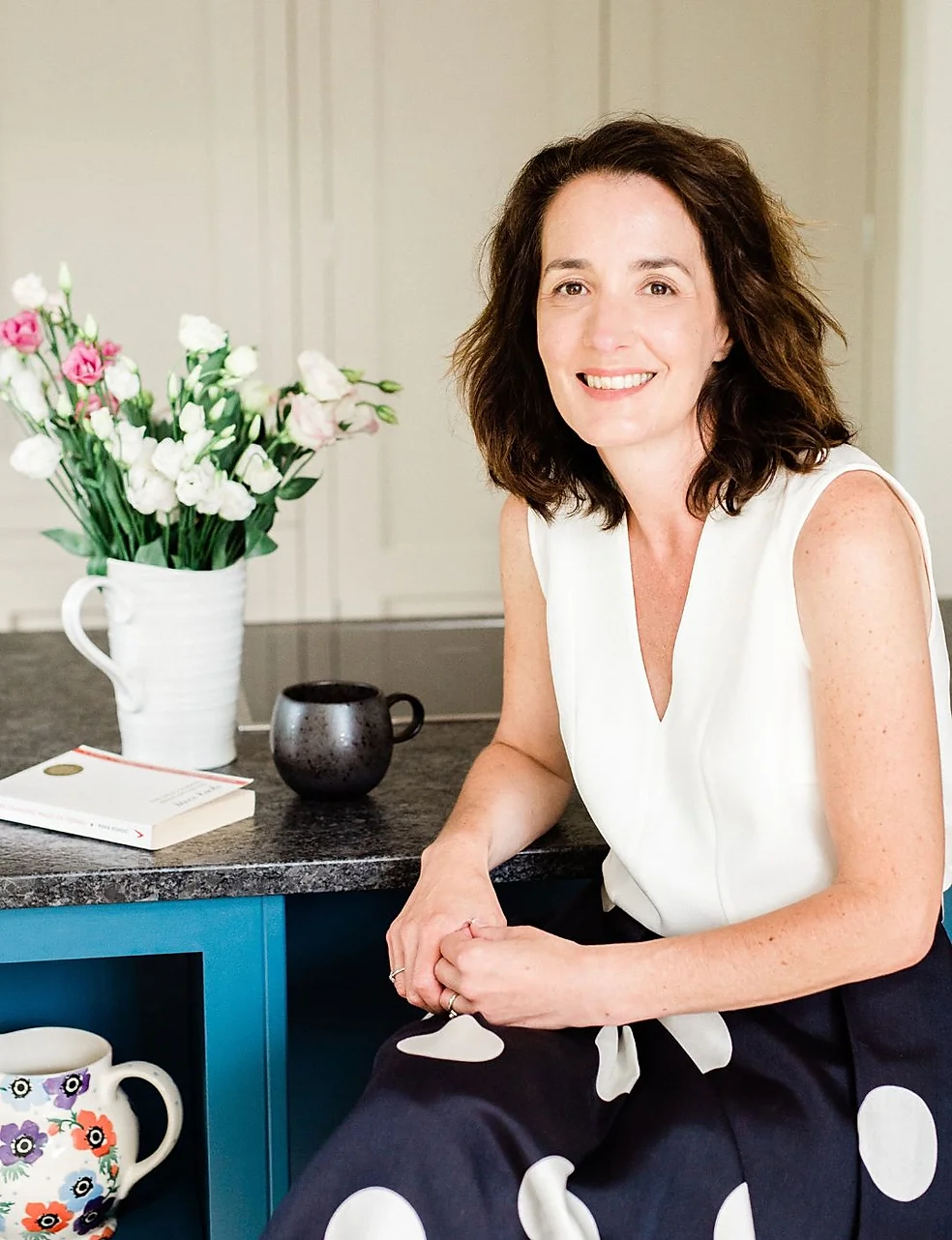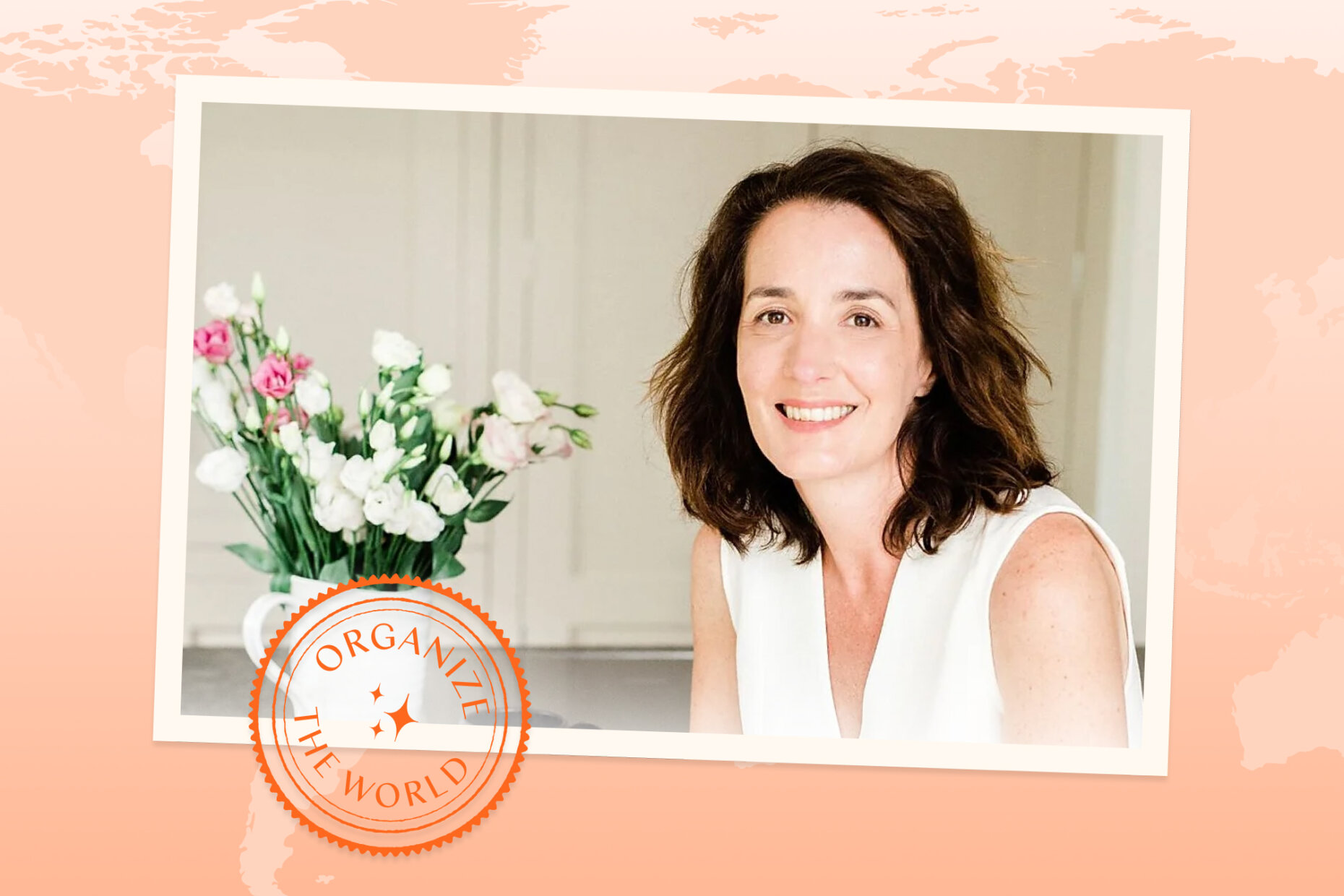This guest column is part of our Organize the World series, in which we feature KonMari Consultants from the many countries where they’re changing lives through organizing. We’ve asked them to give us their unique insights into living a more organized life.
After becoming professional organizers, many of our KonMari Consultants begin to gravitate toward certain specialties that spark joy for them. Some focus on decluttering and health, others run podcasts that celebrate living imperfectly, and still others specialize in working with specific groups — adults with ADHD, colleagues sharing busy offices, and more.
Today’s guest, KonMari Consultant Sue Spencer (A Life More Organised), uses a thoughtful term for one of her specialties: rightsizing. A cousin to “downsizing,” Sue’s clients are often seniors preparing to move into smaller homes, but she also works with recent college graduates, parents of teenagers and new empty nesters. We asked her to explain why she recommends rightsizing multiple times during your life — and how to tackle it.

Redefining Downsizing
When you think about downsizing, an image likely comes to mind – of seniors preparing to leave a home after many decades. Perhaps you’ve helped a parent or grandparent go through the process. If so, chances are, it made you realize how much we can acquire if we wait to downsize until after retirement.
“I’ve been helping seniors downsize for the last three years,” says Sue. “During these sessions, I’ve received comments from their adult children about how having seen their parents go through this process, they aren’t going to leave downsizing until their 80s and how they could ‘do with my help now.’ I also hear my downsizing clients say, ‘I wish we’d done this sooner.’ That’s unsurprising as it’s hard work going through a lifetime of your stuff when you’re in your 70s or 80s.”
Instead, Sue recommends “rightsizing” your home several times throughout your life as priorities shift. She typically works with clients in three main life stages:
- Younger families who have outgrown their homes
- Empty nesters adjusting to what Sue calls “living in a ‘full’ empty house”
- Later-in-life downsizers who plan to move from a larger home into a more manageable living space
But, Sue says, rightsizing can genuinely happen at any life stage, regardless of whether you’re planning a move. “The beauty of rightsizing is that it’s not limited to a specific time – it can be done at any time to remove the speed bumps from around your home that get in the way of you easily living in your space,” she says.
How to Downsize, the Rightsize Way
If you dread the idea of downsizing, you might find Sue’s approach more palatable.
“Rightsizing isn’t about stripping your home bare of the things that make it home – it’s about creating a home that is right for you now, wherever you are in life,” she says. “Downsizing often carries negative associations of giving things up, and it’s often inflated into a huge task making it difficult to know where or how to get started. In reality, it can be a really positive move to support your current lifestyle, and it can also help you address some big questions that are preventing you from moving forward.”
Here’s how Sue recommends proceeding.
01. Let the KonMari Principles Guide You
Rightsizing is different from other decluttering projects in that “it focuses more on reducing clutter and creating organized, functional spaces,” Sue says. For many, rightsizing also includes moving into a new home and properly organizing from the ground up. Still, Sue always starts a rightsizing project with the organizing process outlined by the KonMari Method.
“[The Method] gives structure to the rightsizing process as it naturally guides you through focusing on your ideal lifestyle (how you want to live your life going forward) and breaks the downsizing process into categories so you can make confident decisions about which items you keep with you as you move into a smaller home,” she says.
“If your cupboards are too full of the life you’ve lived, there’s no room for the life you’re living. ”
02. Create a Downsizing Plan
Because downsizing is an inevitable life event, there are many guides, techniques, and experts available to help with the process. (In fact, here is a downsizing guide by KonMari.) The trick is finding the approach that works for you.
Sue recommends dedicating a set amount of time to the project and following a structured plan to keep the process manageable. “My clients find that doing it in an organized way takes away the pressure of feeling they need to be downsizing every day. Breaking the process down into smaller steps, so it’s not the enormity of ‘downsizing your home,’ but rather (for example) completing a simple step like decluttering your bed linens, will help keep you motivated. And the impact of removing items you haven’t used in years to create space for what you use frequently will spur you on to do more.”
03. Recognize that Downsizing Brings Up Feelings
When you’re moving from a house that’s become a home – possibly for decades – the process of decluttering can feel extremely charged. Give yourself the space to feel those emotions.
“Downsizing is never just about your ‘stuff’; it’s emotional,” Sue says. “You revisit experiences, relationships and your lifestyle – who you are now and how you got here. The majority of my clients do not see their possessions as clutter. These are items that they bought and kept as they moved through their lives. [But] many of these items sit unused and fill up cupboard space in their homes. The downsizing (or rightsizing) process involves clearing these items to create space for the life you are living now.”
Sue encourages her clients to focus closely on what truly brings joy especially if they feel overwhelmed. She also regularly shares her favorite motto: “If everything is special, then nothing is truly special.”

04. Focus on What You’re Gaining
Sue’s clients, including those who worry that downsizing will make them feel like they’re losing items they value, are often shocked to discover the opposite is true – the process gives them more of what matters most: space but also energy and joy.
“Often my clients feel a sense of relief and lightness as they release the burden of things that have filled space in their homes,” she says. “There’s also a sense of renewed freedom as my downsizers focus on moving forward and connecting with the items, hobbies and experiences they enjoy. This reset and rediscovery encourages them to do more of the things they love.”
Rightsizing also optimizes your home for your current needs and passion projects. “Empty nesters may find their home is full of stuff from their earlier lives that’s no longer needed. Freeing up this space creates room for new opportunities – a hobby room, guest room, etc,” says Sue. Families with older kids might repurpose a playroom or nursery into a home office or a room for reading, reflection and meditation.
05. Dedicate Time to Settling into Your New Home
A new house may take time to feel like home, but carrying only what sparks joy into your next chapter certainly helps. Because each empty room is a blank slate, moving is an excellent opportunity to think carefully about how to organize efficiently.
Use the KonMari philosophy during this period to acquire only items that will benefit you in the next chapter. Do new items spark joy? Practical storage solutions may not, per se, but do they make it easier for you to live your ideal lifestyle? Sue also helps clients give everything a home – another critical element of the KonMari Method. Following these principles means that your new home will feel as rightsized as possible.

